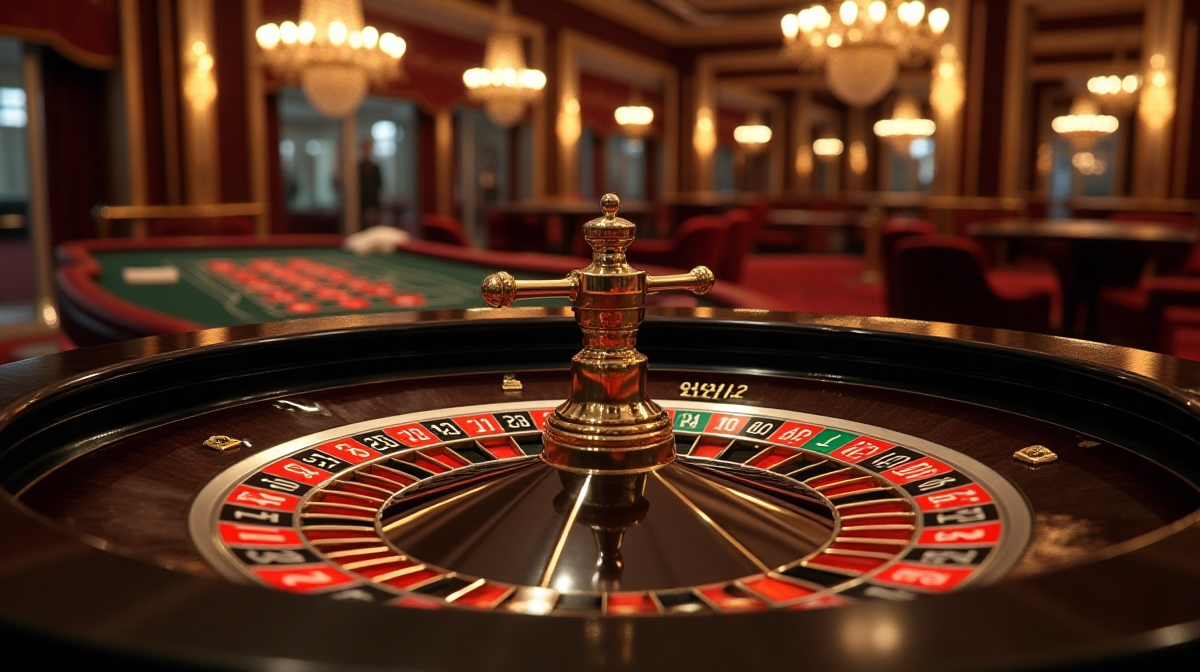5 Roulette Systems That Actually Work?
Introduction: Decoding Roulette Systems & Realistic Expectations
The Allure of Roulette & Why Systems Exist
Roulette, with its spinning wheel and cascading ball, holds an undeniable allure for gamblers worldwide. The simplicity of the game – betting on where the ball will land – belies a complex world of strategies and systems. Players are naturally drawn to the idea of finding a method to consistently beat the odds, turning a game of chance into one of skill. This desire fuels the endless search for the “holy grail” of roulette systems. However, it’s crucial to approach these systems with a healthy dose of skepticism and a firm understanding of the underlying principles of the game. The concept of Fairplay is paramount, both in the game itself and in one's approach to it.
Separating Fact from Fiction: What Truly Works in Roulette
Many systems promise guaranteed profits, but the truth is far more nuanced. Roulette is fundamentally a game of chance, and no system can completely eliminate the house edge. What systems can do is help manage your bankroll, structure your bets, and potentially mitigate losses. The question isn’t whether a system can guarantee a win, but whether it can improve your overall playing experience and potentially extend your playtime. Understanding this distinction is key to responsible gambling. Many are also curious, is fairplay safe when considering online casino options? Reputable casinos prioritize fair gaming practices.
Understanding House Edge & Risk Management - A Crucial Foundation
The house edge represents the mathematical advantage the casino has over the player. In European roulette, the house edge is approximately 2.7%, while in American roulette, it’s 5.26%. This means that, on average, the casino will win 2.7% or 5.26% of all wagers over the long run. No system can overcome this inherent advantage. Effective risk management – setting limits, choosing appropriate bet sizes, and knowing when to walk away – is far more important than any betting system. This is especially relevant when discussing ipl 2024 fairplay and the importance of ethical practices in all forms of gaming.
System 1: The Martingale System – A Classic, But Flawed?
How the Martingale System Works: Doubling Down After Losses
The Martingale system is perhaps the most well-known roulette strategy. It’s incredibly simple: after each loss, you double your bet. The idea is that when you eventually win, you’ll recoup all previous losses plus a profit equal to your initial bet. For example, if you start with a 20. If you lose again, you bet ⚠formula incomplete
The Pros & Cons of the Martingale System
The main appeal of the Martingale system is its simplicity and the allure of quick recovery. However, it has significant drawbacks. The primary problem is that it requires a very large bankroll to withstand a prolonged losing streak.
Table Limits & The Risk of Ruin: Why It’s Not a Guaranteed Win
Casino table limits prevent you from doubling your bet indefinitely. Once you reach the table limit, you can no longer recover your losses. This is known as the “risk of ruin.” Furthermore, even without table limits, a long losing streak can quickly deplete your bankroll. Understanding the correct roulette pronunciation can help you confidently place your bets, but won’t eliminate the risks.
Variations of the Martingale – Grand Martingale & Reverse Martingale
The Grand Martingale involves increasing your bet by more than double after each loss, aiming for larger profits. The Reverse Martingale, on the other hand, involves doubling your bet after each win, hoping to capitalize on winning streaks. Both variations still carry the fundamental risks associated with the Martingale system.
System 2: The Fibonacci Sequence – A Smoother Approach to Betting
Understanding the Fibonacci Sequence and its Application to Roulette
The Fibonacci sequence is a series of numbers where each number is the sum of the two preceding ones: 1, 1, 2, 3, 5, 8, 13, 21, and so on. In roulette, you bet according to this sequence, increasing your bet after each loss and decreasing it after each win.
How to Implement the Fibonacci System at the Roulette Table
You start by betting the first number in the sequence (typically 1 unit). If you lose, you move to the next number in the sequence and bet that amount. If you lose again, you move to the next number, and so on. When you win, you move back two numbers in the sequence.
Fibonacci vs. Martingale: Which Offers Better Risk Control?
The Fibonacci system is generally considered less aggressive than the Martingale. The bet increases are more gradual, which reduces the risk of quickly depleting your bankroll. However, it also means that recovering your losses takes longer.
Managing Bankroll with the Fibonacci System
Effective bankroll management is crucial with the Fibonacci system. You need to have enough funds to withstand several consecutive losses and navigate the sequence without hitting your limits.
System 3: The D’Alembert System – A Conservative Betting Strategy
The D’Alembert System Explained: Incremental Increases & Decreases
The D’Alembert system is a progressive betting strategy that involves increasing your bet by one unit after each loss and decreasing it by one unit after each win. It’s a more conservative approach compared to the Martingale and Fibonacci systems.
Pros and Cons: A More Gentle Approach Than the Martingale
The main advantage of the D’Alembert system is its lower risk. The incremental bet increases mean that you’re less likely to experience large losses quickly. However, the recovery rate is also slower, and it may take longer to recoup your losses.
Determining the Optimal Unit Size in the D'Alembert System
The optimal unit size depends on your bankroll and risk tolerance. A smaller unit size will reduce your risk but also slow down your potential profits.
When to Walk Away: Managing Your Losses with D'Alembert
Setting a loss limit is essential with the D’Alembert system. If you reach your loss limit, it’s time to walk away and avoid chasing your losses.

System 4: The Labouchere System – A More Complex Approach
How the Labouchere System Works: Creating a Betting Sequence
The Labouchere system involves creating a sequence of numbers. Your bet is the sum of the first and last numbers in the sequence. If you win, you cross off those two numbers. If you lose, you add the amount of your loss to the end of the sequence.
Advantages and Disadvantages of the Cancellation System
The Labouchere system offers more control over your betting progression compared to the Martingale or Fibonacci systems. However, it’s also more complex to implement and requires careful record-keeping.
Example Scenario: Walkthrough of a Labouchere Betting Session
Let’s say your sequence is 1-2-3. Your first bet is 4 (1+3). If you win, your sequence becomes 2. If you lose, your sequence becomes 1-2-3-4.
The Importance of Bankroll Size for the Labouchere System
The Labouchere system can require a substantial bankroll, especially if you encounter a long losing streak. The sequence can grow quickly, leading to large bets.
System 5: Visual Ballistics/Dealer Signature – Skill-Based Strategies
The Theory Behind Visual Ballistics: Predicting the Landing Zone
Visual ballistics involves analyzing the speed of the ball and the wheel to predict where the ball will land. Proponents of this strategy believe that by accurately calculating these variables, they can gain an edge over the casino.
Understanding Dealer Signatures and Consistency
Dealer signatures refer to subtle, consistent patterns in how the dealer spins the wheel and releases the ball. Identifying these patterns could theoretically provide an advantage.
The Legal & Ethical Considerations of Visual Ballistics
Using visual ballistics is often frowned upon by casinos and may even be illegal in some jurisdictions. Casinos actively monitor for and discourage this type of behavior. The concept of roulette system effectiveness is constantly debated.
Challenges and Limitations: Why It’s Difficult to Master
Mastering visual ballistics requires significant skill, practice, and a keen eye for detail. It’s also challenging because casinos often use randomizing mechanisms to prevent predictability.

Important Considerations for All Roulette Systems
Bankroll Management: The Cornerstone of Successful Roulette Play
Regardless of the system you choose, bankroll management is paramount. Set a budget, stick to it, and avoid chasing your losses.
Choosing the Right Roulette Game – European vs. American Roulette
European roulette offers better odds than American roulette due to the single zero. Always opt for European roulette whenever possible.
Psychological Aspects: Staying Disciplined and Avoiding Emotional Betting
Emotional betting can lead to impulsive decisions and poor bankroll management. Stay disciplined, stick to your chosen system, and avoid letting your emotions cloud your judgment.
The Role of Randomness: Acknowledging the Inherent Luck Factor
Roulette is ultimately a game of chance. Even the best systems cannot guarantee a win. Acknowledge the role of randomness and accept that losses are inevitable.
Conclusion: Can Roulette Systems Really Work?
Recap of the Systems Discussed
We’ve explored five popular roulette systems: Martingale, Fibonacci, D’Alembert, Labouchere, and visual ballistics. Each system has its own advantages and disadvantages, and none can guarantee a profit.
Realistic Expectations & Responsible Gambling
It’s crucial to have realistic expectations when using roulette systems. They can help manage your bankroll and structure your bets, but they cannot overcome the house edge. Responsible gambling is essential – set limits, play within your means, and never chase your losses.
The Bottom Line: Systems as Tools, Not Guaranteed Wins
Roulette systems are tools, not guaranteed wins. They can be helpful for organizing your gameplay, but they don’t eliminate the inherent luck factor. Approach roulette with a sound strategy, a disciplined mindset, and a commitment to responsible gambling, and remember the importance of Fairplay in all aspects of the game.

